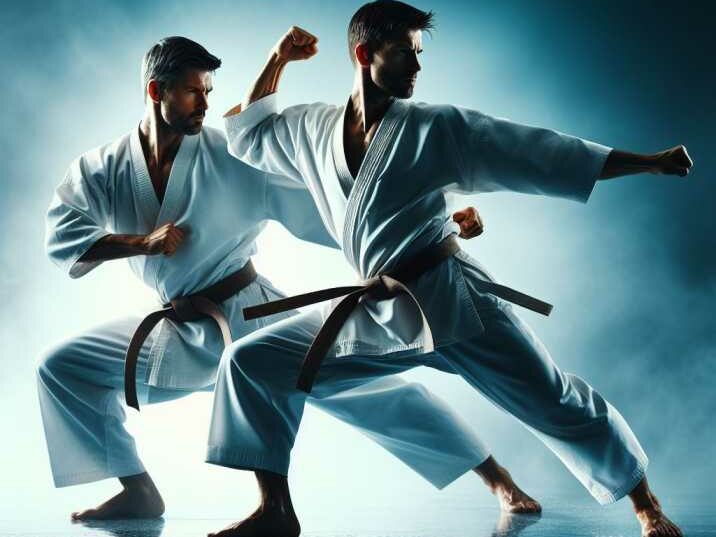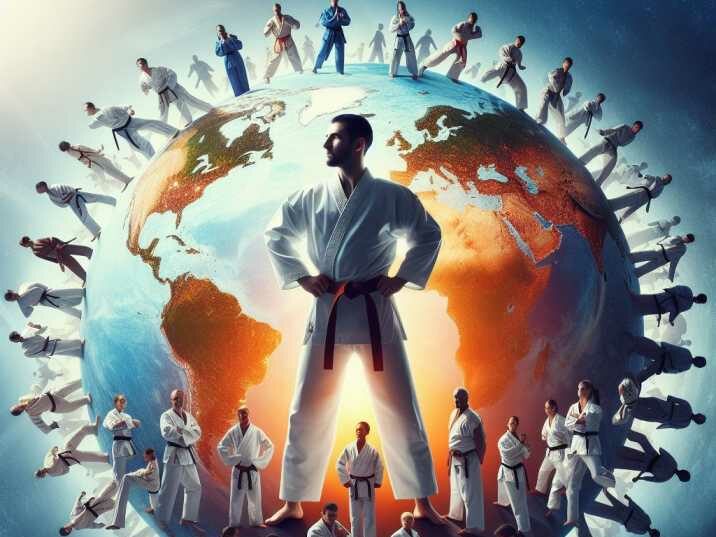Introduction:
Table of Contents
Karate, often recognized for its physical prowess and disciplined techniques, holds within its practice a treasure trove of cultural aspects that span centuries. Cultural aspects associated with Karate go beyond mere physical movements; they encompass traditions, philosophies, and values deeply rooted in Japanese heritage. In this article, we embark on a journey to unravel the intricate cultural aspects of Karate, exploring its historical significance, traditional rituals, and global impact.

Historical Roots of Karate:
The roots of Karate can be traced back to the island of Okinawa, Japan, where it originated as a method of self-defense among the indigenous Ryukyu people. Karate, which translates to “empty hand,” reflects the unarmed combat techniques developed by Okinawan peasants to protect themselves from bandits and invaders. Over time, Karate evolved, blending indigenous Okinawan martial arts with Chinese martial arts influences brought by traders and visitors. This fusion gave rise to various styles of Karate, each with its unique techniques and philosophies.
Philosophical Foundations:
At the heart of Karate lie profound philosophical principles that extend beyond physical combat. Central to these principles is the concept of bushido, or the “way of the warrior,” which emphasizes integrity, discipline, and respect. Practitioners of Karate are not only trained in combat skills but also in moral virtues, such as humility and self-control. These values, inherited from Japanese samurai tradition, permeate every aspect of Karate training, shaping not only the body but also the mind and spirit.
Traditional Rituals and Etiquette:
Karate is not merely a series of punches and kicks; it is a disciplined practice steeped in tradition and etiquette. Before entering the dojo, or training hall, practitioners perform a bow as a sign of respect. Within the dojo, strict protocols govern conduct, emphasizing humility, courtesy, and obedience to the sensei, or instructor. Traditional rituals, such as the practice of kata (choreographed patterns of movements) and kumite (sparring), serve not only as physical exercises but also as vehicles for transmitting cultural values and preserving heritage.
Global Influence and Adaptation:
While Karate has deep roots in Japanese culture, its influence has transcended borders, spreading to all corners of the globe. In the early 20th century, Karate masters began to teach their art outside Japan, leading to its proliferation in countries such as the United States. Today, Karate enjoys widespread popularity as a martial art, a competitive sport, and a form of physical fitness. Despite its global reach, Karate remains deeply rooted in its cultural origins, with practitioners around the world paying homage to its Japanese heritage.

Table of Information Cultural Aspects:
| Cultural Aspects | Details |
|---|---|
| Historical Roots | Originated in Okinawa, Japan as a method of self-defense |
| Philosophical Foundations | Emphasizes integrity, discipline, and respect, influenced by bushido |
| Traditional Rituals | Bowing as a sign of respect, adherence to etiquette within the dojo |
| Global Influence | Spread worldwide through teaching efforts of masters, popular as a sport |
| Significance of Kata | Choreographed patterns of movements, transmit cultural values |
| Significance of Kumite | Sparring practice, enhances combat skills and adaptability |
Conclusion:
In conclusion, the cultural aspects associated with Karate are as diverse and profound as the art itself. From its humble beginnings in Okinawa to its global presence today, Karate embodies a rich tapestry of tradition, philosophy, and values. Through its practice, practitioners not only hone their physical skills but also cultivate a deeper understanding of Japanese culture and heritage. As we continue to embrace the legacy of Karate, let us cherish and uphold the cultural treasures it holds, ensuring that its traditions endure for generations to come.
FAQs: 1. What does the term “Karate” mean?
- Answer: “Karate” translates to “empty hand” and refers to unarmed combat techniques developed in Okinawa, Japan.
2. What are some core philosophical principles of Karate?
- Answer: Karate emphasizes values such as integrity, discipline, and respect, drawing inspiration from the concept of bushido, or the “way of the warrior.”
3. What traditional rituals are observed in Karate practice?
- Answer: Karate practitioners perform rituals such as bowing as a sign of respect before entering the training hall and adhere to strict etiquette within the dojo.
4. How has Karate spread globally?
- Answer: Karate’s influence has spread worldwide through the efforts of masters who taught the art outside Japan, leading to its popularity as a martial art and sport in various countries.
5. What is the significance of kata and kumite in Karate?
- Answer: Kata and kumite serve as traditional practices in Karate, offering not only physical training but also a means of transmitting cultural values and preserving heritage.


